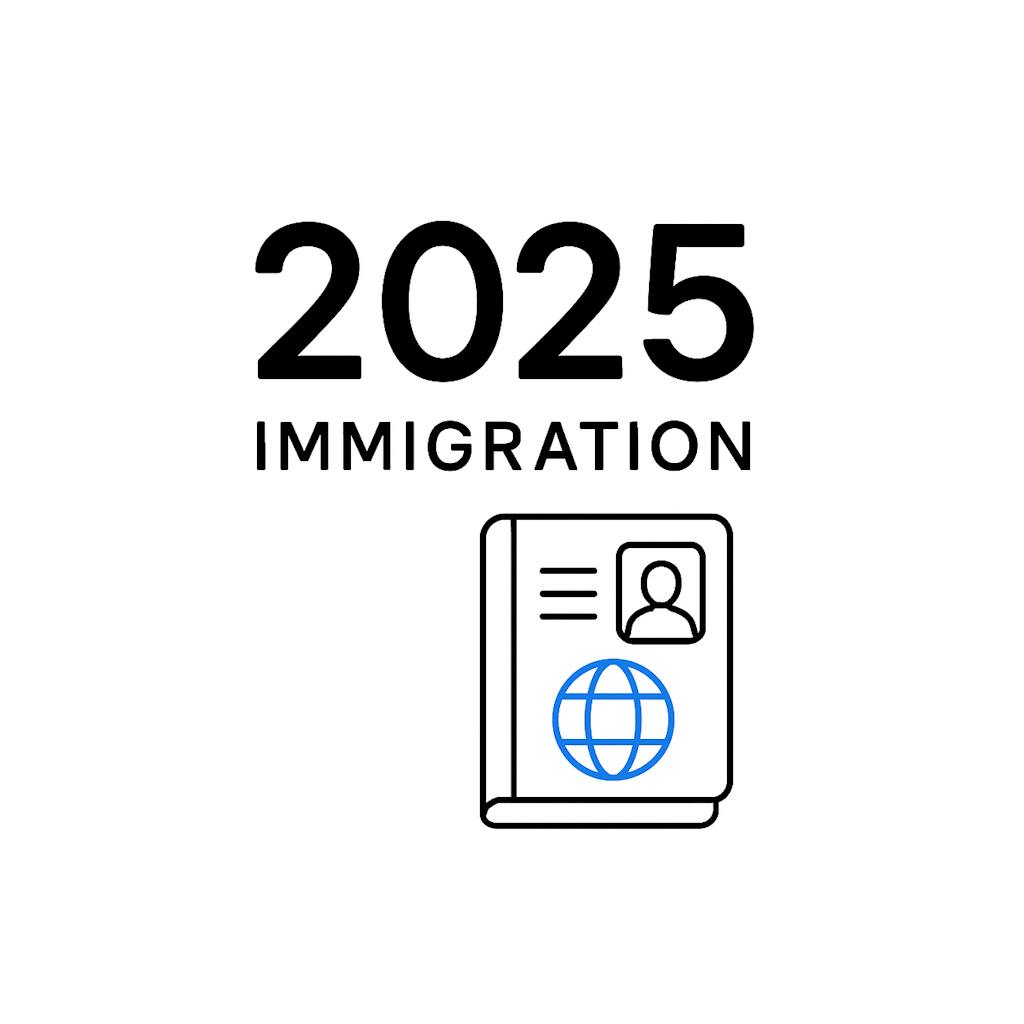U.S. Immigration in 2025: What’s Changing and What It Means for You
by Dos team

by Dos team

The U.S. immigration system is undergoing major changes in 2025—some expected, others not. If you're planning to work, study, or reunite with family in the U.S., you’re facing a more complex landscape than even a year ago. From rising visa fees and backlogs to a shifting policy environment, the year ahead brings a mix of new barriers—and a few important opportunities. Here's what you really need to know.
Between congressional inaction, executive orders, and agency backlogs, getting a U.S. work visa in 2025 requires serious strategy. Several changes are already in effect—and more are likely on the horizon.
The Biden administration’s reforms to the H-1B visa system are now live. Priority is being given to higher wage levels and U.S. degrees, which has made it more difficult for entry-level foreign workers to qualify—especially in tech, healthcare, and finance.
While this aims to reduce exploitation, it’s also pricing out smaller companies and startups that rely on international talent. USCIS has hinted at additional rules later this year to further tie visa eligibility to employer size and wage level.
Bottom line: If you're applying for an H-1B in 2025, the competition is tougher—and preparation matters more than ever.
PERM labor certification (required for most employer-sponsored green cards) is currently taking 10–12 months or longer, due to staffing issues at the Department of Labor.
This has delayed employment-based green card cases across industries. Experts recommend filing early and exploring concurrent green card categories (like EB-2 NIW) when possible.
USCIS is tightening scrutiny on marriage-based green card applications, especially those filed after short-term visas (like ESTA or B-2). Interviews are being scheduled more frequently, and RFEs (Requests for Evidence) are at a five-year high.
With processing times pushing 18+ months in some states, families are under real strain. Immigration attorneys are urging couples to document their relationship timelines and financial lives thoroughly from the outset.
Wait times for U.S. citizens trying to sponsor adult children or siblings remain painfully long—often 10+ years, depending on the country of origin.
Unfortunately, no reforms are currently on the table to address these backlogs, leaving many families separated indefinitely.
The Optional Practical Training (OPT) and STEM OPT programs remain untouched in 2025, despite some pressure from legislators to limit them. This means international students in eligible STEM programs can still get up to 3 years of post-study work authorization.
That said, scrutiny on student visa (F-1) intent has increased at consular interviews. Make sure your plans to return home (or adjust status legally) are clearly documented.
F-2 spouses of F-1 students cannot work in the U.S., and there’s no movement toward expanding their access. This is a growing concern among families considering whether U.S. study is worth the cost.
There’s been no permanent legislative fix for DACA recipients or undocumented youth brought to the U.S. as children. New DACA applications remain blocked, and legal challenges continue to chip away at protections.
For undocumented youth without DACA, legal options are dwindling fast. Immigration attorneys are now exploring humanitarian parole, family petitions, and other creative solutions.
New asylum rules in 2025 introduce strict caps on daily applications at land borders. Migrants without scheduled appointments via the CBP One app are being denied entry.
For those already inside the U.S., court backlogs have passed 2 million cases, and asylum decisions can take 5–10 years. Legal representation is no longer optional—it’s essential.
Backlogs at USCIS are impacting naturalization timelines, with wait times ranging from 10 to 20 months, depending on location. The civics test and interview process remain unchanged, but RFEs for tax records and criminal history are on the rise.
If you're eligible for naturalization, apply now. Delays are expected to worsen heading into the 2026 election cycle.
Many green card applicants and asylum seekers are experiencing long waits for work authorization renewals—some exceeding 6 months. This is impacting people’s ability to work, rent apartments, and even renew driver’s licenses.
USCIS recommends applying 180 days before expiration, and some categories now benefit from automatic 540-day extensions—but only if you're eligible.
USCIS introduced sweeping fee increases in April 2024, and more hikes are expected in late 2025. For example:
Fee waivers remain available for certain low-income applicants, but most migrants are now paying substantially more than the cost of their application being processed.
While there’s no federal health surcharge like in the UK, U.S. immigration authorities do require proof of adequate health insurance for most green card applicants.
Failure to meet these standards can result in denials, especially under the public charge rule, which remains active in modified form.
The U.S. and Canada expanded reciprocal work and travel arrangements in 2025, particularly under the Global Entry/NEXUS programs and the TN visa for professionals. These improvements streamline cross-border mobility for North American workers.
A humanitarian parole program for certain Central American families was extended this year, allowing limited numbers to legally reunite with U.S. sponsors. This is a stopgap—not a pathway to permanent residency.
U.S. immigration in 2025 is complex, fragmented, and high-stakes. Policies are shifting rapidly. Costs are rising. And legal status is more precarious than ever.
At Dos, we make the system easier to navigate. Whether you’re applying for a visa, trying to stay in status, or looking to bring family to the U.S., we connect you with vetted, experienced immigration lawyers who guide you through every step—affordably, quickly, and with full transparency.
Immigration shouldn’t be guesswork. It should be guided.